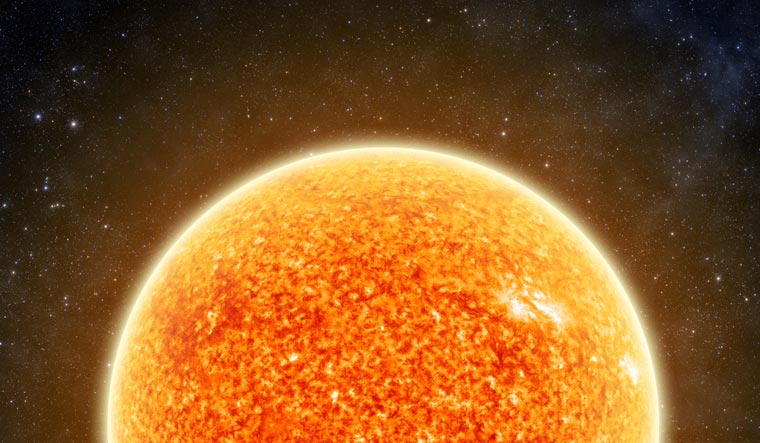After The Successful Launch Of Chandrayaan 3 ISRO Is Now Preparing For Its Second Much Anticipated Mission
India's first solar mission, ISRO's Aditya L1 spacecraft, named after one of the Sanskrit names of the Sun, will be launched by the PSLV-XL launch vehicle on August 26, 2023, from the Satish Dhawan Space Centre (SDSC SHAR) in Sriharikota. It will be launched into Low Earth Orbit (LEO) around 800 km from the Earth's surface. The spacecraft will perform a 'Surya Namaskar' (salutation to the Sun) as it orbits around a special point called Lagrange point 1 (L1), which is about 93 million miles or 149 million kilometers away from the Sun.
This mission will be the first of its kind to study and research the Sun's atmosphere, its environment, and everything related to it. The 1,500 kg spacecraft will carry special equipment called payloads to study different parts of the Sun's atmosphere.
The mission is expected to be launched in august. this will be india's first mission to study sun
Out of the seven payloads the satellite carries to study different parts of the Sun, including its outer layer (the corona), four look directly at the Sun from a special position called L1, while the other three study particles and fields at the same point. These studies help us learn about how solar activity affects the space between planets. The Aditya L1 payloads' suits are expected to provide crucial information about various aspects of the Sun, like coronal heating, coronal mass ejections, pre-flare and flare activities, space weather dynamics, and the movement of particles and fields,” explained Girish Linganna, Space and Aerospace expert.
The L1 point is one of the most important Lagrangian points, found by mathematician Joseph Louis Lagrange. It is located about 1.5 million kilometers inside Earth's orbit, between the Sun and the Earth. “At these points, the gravitational forces between two objects balance out or have a neutral gravity point, making it possible for spacecraft to stay in one place without using much fuel. These spots are like parking spaces in space that spacecraft can use to stay in one place without using much fuel. It is like finding a stable spot in a river where the water flows in a way that keeps you in the same spot without paddling,” added Linganna.
According to Linganna, out of the five Lagrange points, three are not very steady, and two are stable. The unstable ones, called L1, L2, and L3, are found along the line connecting the two big masses. The stable ones, known as L4 and L5, form the tips of two equal-sided triangles with big masses at their corners. L4 is ahead of Earth's orbit, and L5 is behind it.
“The L1 point of the Earth-Sun system gives a clear view of the sun all the time, without any occultation/ eclipses and it is where the Solar and Heliospheric Observatory Satellite (SOHO) is located,” explained Linganna.
Aditya L1, is also known as Aditya-Lagrange Point 1. After reaching the LEO, the satellite will be maneuvred using its onboard thrusters. “A series of earth burn elliptical orbital maneuvers is conducted to raise its orbit towards the L1 Lagrange point to surpass the earth's gravitational pull. The estimated time required to reach the L1 Lagrange point is around 109 days,” said Dr. T.N. Suresh Kumar, former senior scientist at ISRO.
Once the Aditya L1 mission reaches the L1 Lagrange point, it will be injected to a halo orbit. “A halo orbit is a type of orbit that allows the satellite to remain in a stable position between the Earth and the Sun. The satellite will use its onboard scientific instruments to study the dynamics of Sun's chromosphere and corona, its magnetic field, and its solar flares, solar wind etc. The data collected by the Aditya L1 mission will help scientists to understand better about the Sun and its impact on Earth,” Kumar told THE WEEK.
The Aditya L1 mission will use its onboard thrusters to increase its orbital height and exit from the earth's gravitational influence, then it will cruise on a coasting path towards L1. This method is adopted to have the best propulsion efficiency to conserve the propellant. Once the spacecraft reaches a distance of approximately 1.5 million kilometers from Earth, it will be inserted into a halo orbit.
The onboard thrusters on the Aditya spacecraft are small rocket engines that use its onboard computer to control the spacecraft's attitude and orbit till the end of life of the mission. The Aditya L1 mission will always be in reduced Earth gravitational pull, as it will be located in the L1 Lagrange point. The L1, L2, and L3 Lagrange points are colinear, meaning that they lie along the line connecting the Earth and the Sun. The L4 and L5 Lagrange points are 60 degrees apart, located 60 degrees ahead and behind the Earth in its orbit around the Sun.
“The Aditya L1 mission is a complex and challenging task, but it has the potential to provide valuable insights into the Sun and its impact on Earth. The mission is expected to have a life of around 4 to 5 years,” said Kumar.
After Moon, Comes The Sun!🔆
PROUD TO BE INDIAN


No comments:
Post a Comment